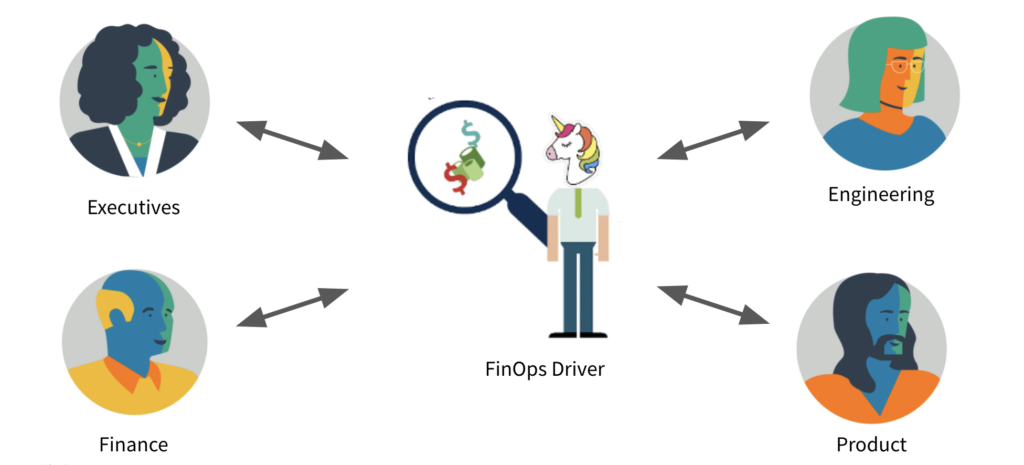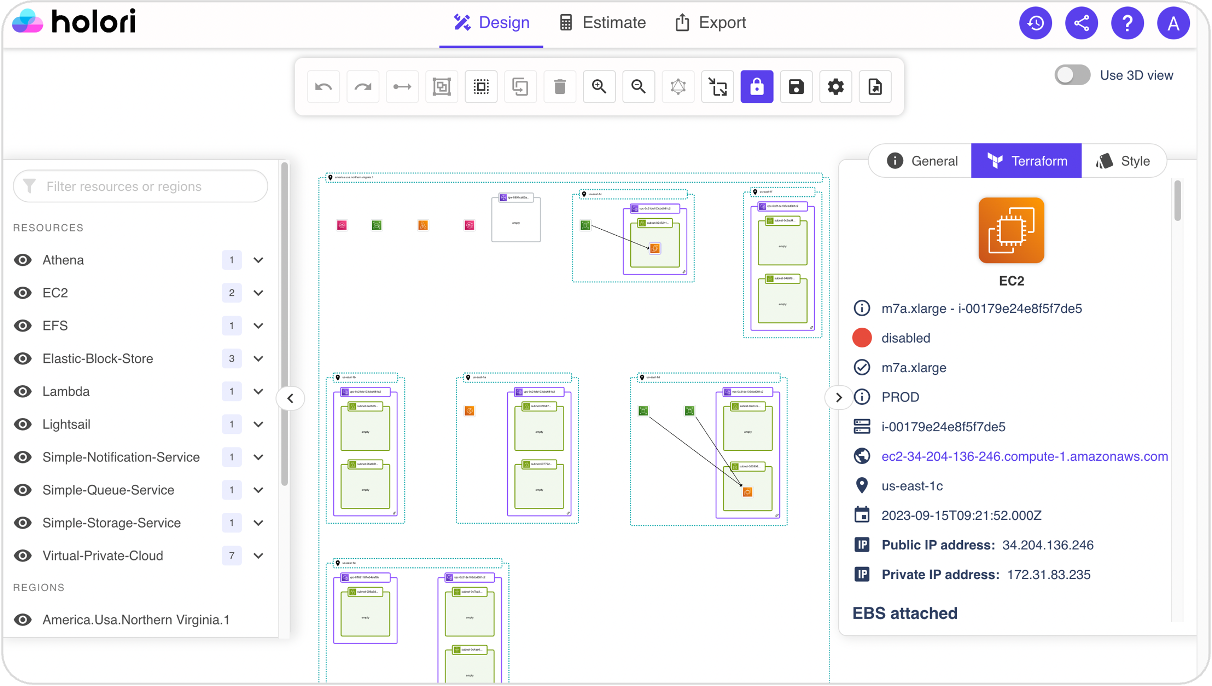In today’s digital landscape, cloud computing has become the backbone of many businesses. Its scalability, agility, and access to cutting-edge technologies offer a competitive edge. However, with great power comes great responsibility…and potentially a hefty cloud bill. This is where FinOps steps in.
Companies spend on average $2.2M/year in the cloud and approximately 30% of that is money wasted. As the current cloud market is around $680B, we can forecast that nearly $200B is wasted/poorly utilized causing frustration for business owners but also leading to useless carbon emission. An idle server consumes 30-40% of its maximum power even when it’s not doing any work. It is expected that cloud computing will use 10% of the worldwide electricity supply by 2030 so we should use it efficiently.
This summarizes in a few sentences why FinOps is an essential role for companies to not waste money but also why their contribution is important for society overall.
Covid accelerated the adoption of cloud when at the time everybody was just focusing on making things work rather than looking at the costs. Now we are entering the rationalization phase and FinOps has a big role to play. Money is not as cheap as it was before given the current inflation and the rise of interest rates. Optimizing your cloud bill is therefore a must.
What is FinOps and what are the main goals?
FinOps, a blend of “Finance” and “DevOps,” is more than just cloud cost management. It’s a cultural shift and operational framework that fosters collaboration between finance, engineering, and business teams. The ultimate goal? To maximize the business value you derive from your cloud investment while optimizing your cloud spend.
- Boosts Business Value: FinOps ensures your cloud resources directly support your business goals. You’re not just paying for servers; you’re paying for innovation, agility, and a competitive advantage.
- Enhances financial visibility: Ensuring financial accountability and transparency stands as a cornerstone of FinOps. It is imperative for organizations to have a comprehensive grasp of their cloud expenditures and their connections to different projects, teams, and departments.
- Optimizes Cloud Spend: FinOps helps identify and eliminate wasteful spending on underutilized resources or inefficient configurations. This translates to real cost savings that can be reinvested in strategic initiatives.
- Improves Collaboration: FinOps breaks down silos between teams. Finance, engineering, and business units work together with a shared understanding of cloud costs and their impact on the bottom line.
The FinOps Team: A Collaborative approach

FinOps team involve multiple stakeholders:
Leadership: Executives (CTO, CIO, CFO) play a pivotal role in championing the adoption of FinOps principles within the organization. They lead by example, emphasizing accountability and transparency across all levels.
Finance and Procurement: Professionals in finance and procurement rely heavily on precise financial reporting and historical billing data to enhance accounting practices and forecasting accuracy. Leveraging their analytical expertise, they negotiate rates with cloud vendors to optimize costs effectively.
Business/Product Owners: Business and product owners should know what the product cost and how much revenue it generates.
Engineering/DevOps: Engineering and DevOps teams are instrumental in implementing FinOps practices, establishing cost efficiency as a key performance metric. They develop and maintain support services that facilitate FinOps operations, striving to optimize solutions to minimize cloud expenditure. Given their substantial consumption of cloud resources, they actively respond to cost optimization opportunities.
FinOps Practitioners: FinOps practitioners contribute significantly to forecasting cloud spend and collaborating within teams to accurately budget and allocate resources. These practitioners often include individuals with experience in software asset management, performing similar functions with enterprise software and Software as a Service (SaaS) solutions. They bring valuable expertise in optimizing resource allocation and controlling costs across cloud environments.
Cloud architect: Through collaboration with FinOps teams, cloud architects ensure that architectural decisions are in harmony with both business objectives and cost optimization goals.
The FinOps playbook in 5 essential steps
1- Decide which FinOps tool to choose
Native cloud cost management tools: Tools such as AWS Cost Explorer serve as a common starting point for teams venturing into cloud cost management. However, as cloud usage expands across multiple providers and services, these native tools may lack the capability to provide comprehensive and accurate data.
Custom tools: Some organizations opt to develop their own in-house cost monitoring solutions. While this approach offers flexibility and customization, it also comes with inherent risks, including potential maintenance challenges and limited scalability.
Third-party cost and optimization monitoring tools: Alternatively, organizations can leverage third-party solutions such as Holori that are specifically designed to handle the complexities of cloud-native cost dynamics. These modern tools offer a comprehensive suite of features for monitoring and optimizing cloud costs in real-time, empowering teams to make informed decisions and maximize cost efficiency across cloud resources.
2- Visualize your cloud costs
The first step to taming your cloud bill is seeing exactly where your money goes. FinOps encourages clear visibility into your cloud expenses. This means utilizing tools that provide detailed breakdowns of your spending by service, resource type, and even department. Use tags to allocate costs consistently across several vendors. Think of it like switching on a light in a dark room – suddenly, you can see where all the hidden costs are lurking.
To visualize your cloud costs you can use tools such as Holori who aggregates your costs coming from multiple sources and displays them. Use filters and tags to navigate through your costs and set up views to create custom and re-usable cost reports:
3- Understanding cloud costs
Once you can see your costs, it’s time to understand them. This involves analyzing your infrastructure alongside your cost and business data. Are you paying for idle resources? Are you using the most cost-effective instance types for your workloads? By correlating your infrastructure with your spending, you can pinpoint areas for potential optimization.
Simply relying on dashboards and tags may not provide a comprehensive understanding of your cloud infrastructure. What could be more effective than a diagram to aid in exploring and grasping your infrastructure?
The Holori FinOps platform offers a graphical interface that seamlessly complements the financial perspective, enhancing your ability to visualize and analyze your cloud environment.

4- Optimize your cloud expenses
Armed with knowledge about your costs and infrastructure, you can now unleash the true power of FinOps – optimization! This might involve right-sizing resources to eliminate waste, leveraging reserved instances and savings plans for predictable workloads or utilizing spot/preemptible instances. Another important leverage when optimizing cloud costs is rewriting application code or re-architecturing the solution.
Here’s where the real magic happens – transforming your cloud bill from a financial nightmare to a testament to responsible resource management.
Once again Holori provides a dashboard will all the recommendations to perform to optimize your costs. Navigating through your cloud infrastructure diagram can also help you significantly.
5- Set up continuous good practices
Remember, FinOps is not a one-time fix. It’s an ongoing process of monitoring, analyzing, and optimizing your cloud spend. By continuously revisiting these three steps, you can ensure your cloud costs are always under control, allowing you to focus on what truly matters – innovation and business growth.
To ensure good continuity within your organization, you need to define budget, threshold and alerts but most importantly create a FinOps culture within your company. By fostering a culture of cost awareness and accountability, FinOps encourages teams to work together towards common cost management goals, share best practices, and continuously improve their cloud spending practices. Through workshops, training sessions, and knowledge sharing initiatives, organizations can empower their teams with the skills and knowledge needed to succeed in the era of cloud computing.
Conclusion
The cloud revolution brings both power and responsibility. FinOps equips you to manage cloud costs effectively, not just cut them. By fostering collaboration and leveraging data, FinOps helps you:
- Reduce waste: Eliminate idle resources and optimize configurations.
- Gain financial clarity: Understand your cloud spend and identify savings opportunities.
- Align costs with goals: Ensure cloud investments drive business value.
- Save the planet
FinOps is an ongoing journey of monitoring, analyzing, and optimizing. Embrace a culture of cost awareness, leverage FinOps tools, and empower your teams. With FinOps as your guide, unlock the full potential of the cloud while keeping your finances on track.
Start your FinOps journey today with Holori : https://app.holori.com/





